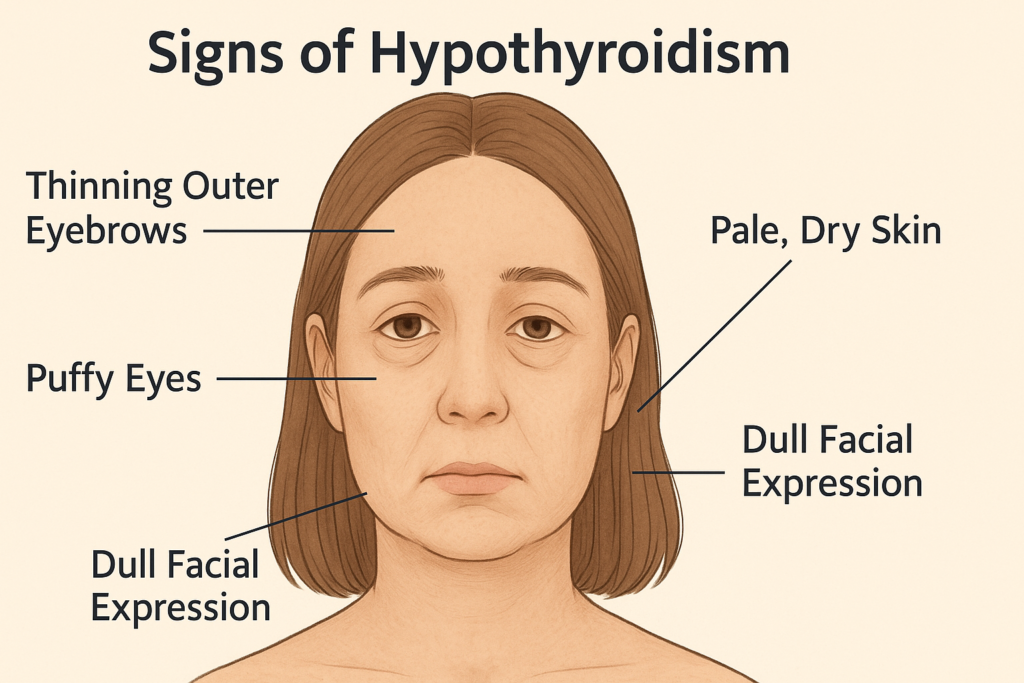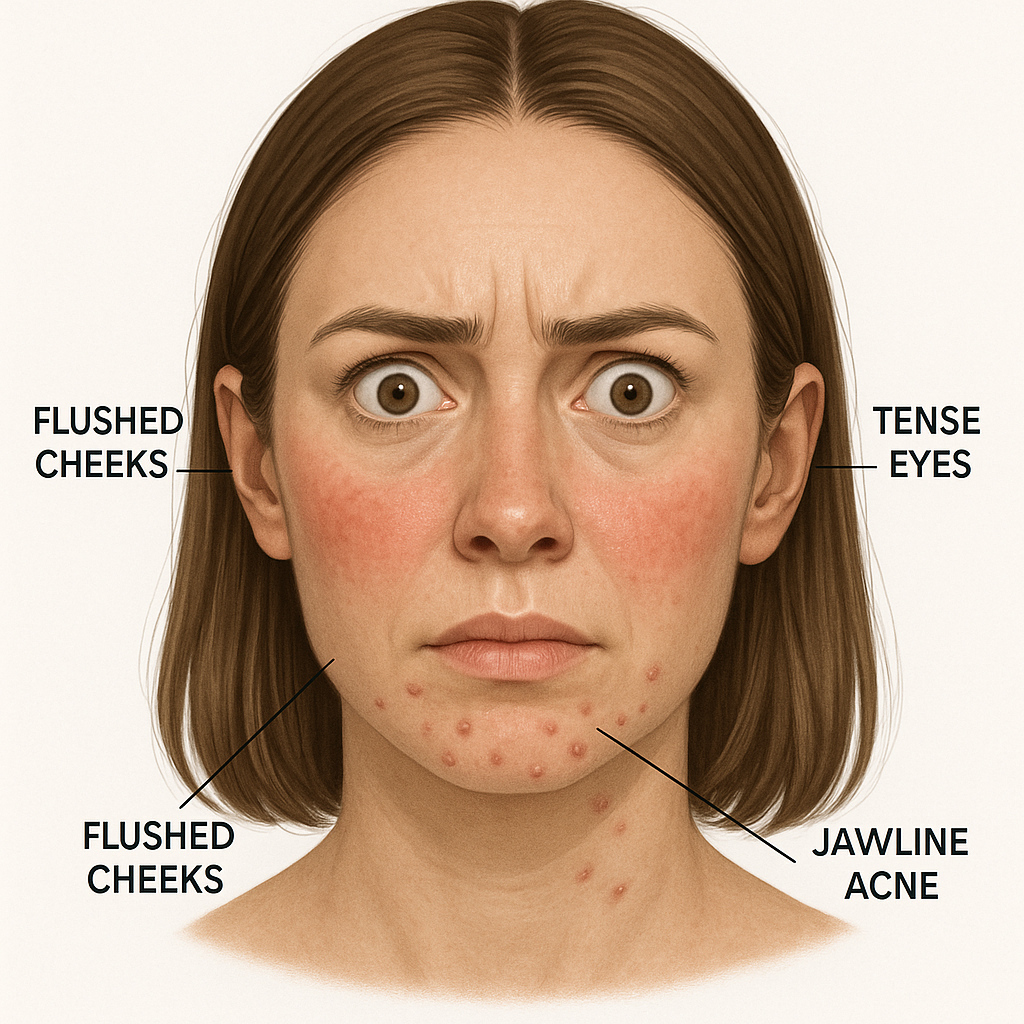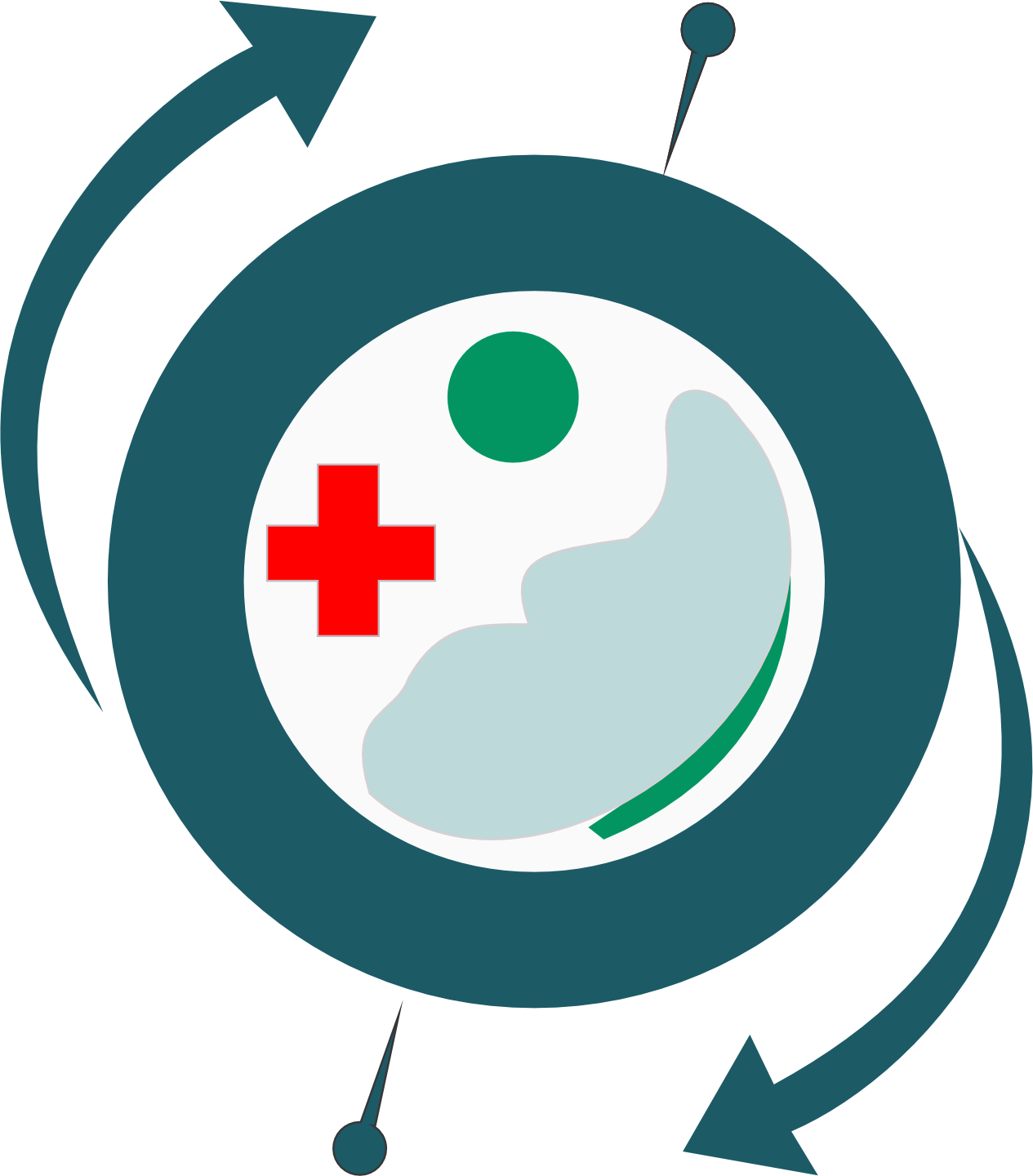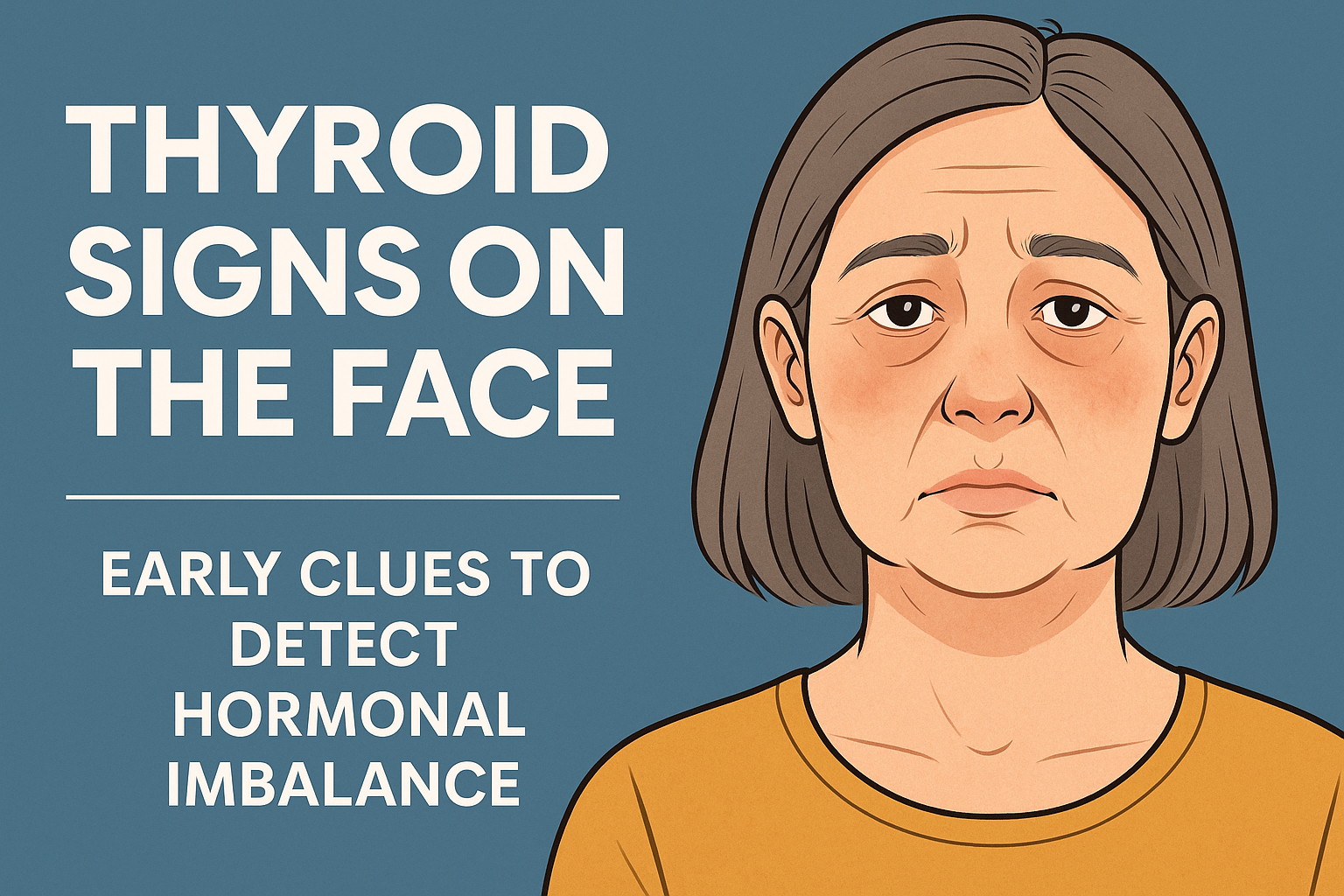Thyroid Signs on the Face: What Your Appearance Reveals About Your Hormonal Health
What Is the Thyroid and Why Does It Affect Your Face?
The thyroid is a small, butterfly-shaped gland located at the front of the neck. Despite its small size, it has a major impact on many vital body functions. It produces the hormones T3 (triiodothyronine) and T4 (thyroxine), which regulate metabolism, body temperature, cell growth, cardiovascular health, and emotional balance.
When the thyroid malfunctions — whether it’s underactive (hypothyroidism) or overactive (hyperthyroidism) — it can visibly alter the appearance of the face. These thyroid signs on the face often appear even before classic symptoms like fatigue, weight changes, or anxiety.
That’s because thyroid hormones directly influence circulation, skin hydration, hair growth, and even facial expressions. Subtle changes like swelling, paleness, dry skin, or acne can be early signs of a hormonal imbalance.
Ignoring these signs is common, but learning to recognize and understand what your face is telling you can lead to early diagnosis, preventing serious complications like autoimmune diseases, depression, or heart problems.
So, observing your face isn’t just about aesthetics. It’s a valuable strategy for prevention and self-care. In this article, we’ll explore the main thyroid signs on the face, explain their causes, scientific basis, and offer practical and accessible solutions for each one.
Facial Signs of Hypothyroidism

1. Loss of the Outer Third of the Eyebrows
One of the earliest thyroid signs on the face is thinning or loss of the outer third of the eyebrows. This happens because reduced T3 hormone production disrupts the hair follicle cycle, causing the follicles to enter a premature resting phase.
The outer part of the eyebrow is more affected due to its lower blood circulation. As a result, it’s often the first area to show changes when thyroid function declines. The thinning usually occurs gradually and is often blamed on aging or stress, delaying diagnosis.
Practical solution:
– Request TSH, T3, and T4 lab tests.
– Include iodine- and selenium-rich foods (like seaweed and Brazil nuts).
– Apply castor oil or rosemary oil to the area with gentle massage.
2. Puffy Face (Myxedema)
Another common sign of hypothyroidism is facial puffiness, especially around the eyelids and cheeks. Known as myxedema, this swelling has a soft, doughy consistency and is caused by fluid retention and the buildup of mucopolysaccharides in the skin.
Practical solution:
– Drink at least 2 liters of water per day.
– Reduce sodium intake and avoid processed foods.
– Take light walks to stimulate lymphatic drainage.
3. Pale or Yellowish Skin
A pale or slightly yellow skin tone may be mistaken for tiredness or lack of sun exposure, but it can signal thyroid dysfunction. When metabolism slows down, blood circulation decreases and the skin receives less oxygen. Additionally, the body may struggle to convert beta-carotene into vitamin A, causing a yellowish tint.
Practical solution:
– Increase intake of preformed vitamin A (liver, eggs).
– Include antioxidant-rich foods like citrus fruits and leafy greens.
– Request tests for free T3 and thyroid antibodies (TPO, TG).
4. Dry or Rough Skin
Dry, flaky skin on the forehead, cheeks, or around the nose is a classic sign of hypothyroidism. Hormone deficiency decreases sebum production and slows down skin cell renewal, leading to a rough texture and tightness.
Practical solution:
– Use moisturizers with ceramides, urea, or hyaluronic acid.
– Increase omega-3 intake (salmon, chia seeds, flaxseed).
– Avoid long, hot showers.
5. Goiter (Thyroid Enlargement)
A visible enlargement of the thyroid gland—called a goiter—can cause swelling in the front of the neck near the Adam’s apple. It may be a sign of iodine deficiency or autoimmune conditions like Hashimoto’s.
Practical solution:
– Use iodized salt in cooking (moderately).
– Eat seaweed and saltwater fish.
– Get thyroid hormone tests and a neck ultrasound.
6. Drooping Eyelids
Drooping of the upper eyelids may occur due to weakened muscles from low T3 levels, giving a tired or sad look.
Practical solution:
– Consult a doctor for thyroid assessment.
– Perform facial exercises.
– Include lean protein sources like chicken or eggs.
7. Under-Eye Bags
Under-eye bags may stem from fluid retention caused by hypothyroidism, especially noticeable in the morning.
Practical solution:
– Elevate your head during sleep.
– Apply cold compresses in the morning.
– Eat natural diuretics like cucumber and watermelon.
8. Dull Facial Expression
A slow or flat facial expression may indicate slowed muscle response and poor nerve stimulation, common in hypothyroidism.
Practical solution:
– Practice exaggerated facial movements.
– Massage the face to improve circulation.
– Monitor thyroid hormone levels.
Facial Signs of Hyperthyroidism

9. Red or Flushed Face
A flushed or red face may result from increased blood flow and body heat due to excess T3.
Practical solution:
– Avoid stimulants like caffeine and spicy food.
– Stay hydrated.
– Request TSI, TSH, and free T4 tests.
10. Oily Skin and Acne
Oily skin and jawline acne may be caused by overstimulated sebaceous glands due to elevated thyroid hormones.
Practical solution:
– Use gentle, alcohol-free facial cleansers.
– Eat zinc-rich foods like pumpkin seeds.
– Consult an endocrinologist.
How to Correctly Interpret Facial Signs
Not every facial change means something serious. But when persistent, they could be early thyroid warnings.
Essential Tests and Nutrients for Thyroid Health
Request tests like TSH, Free T3, Free T4, TPO, TG, and TSI. Essential nutrients include iodine, selenium, zinc, and vitamin D.
Daily Habits to Keep Your Thyroid in Balance
– Use iodized salt moderately.
– Avoid toxins and pesticides.
– Exercise regularly.
– Support gut health.
– Avoid excessive soy.
When to See an Endocrinologist
If you notice two or more facial signs along with fatigue, weight changes, or sleep issues, consult a specialist.
Conclusion
Thyroid signs on the face are early alerts. Paying attention to them, adopting healthy habits, and getting proper testing can protect your long-term health.
Recommended Reading
Discover foods and habits that reduce inflammation and protect your thyroid from autoimmune diseases.
Read now
Strengthen your immune system and prevent thyroid disorders through strategic nutrition.
Learn more
For official thyroid health guidelines, visit the Brazilian Society of Endocrinology.
Access the official site


No responses yet